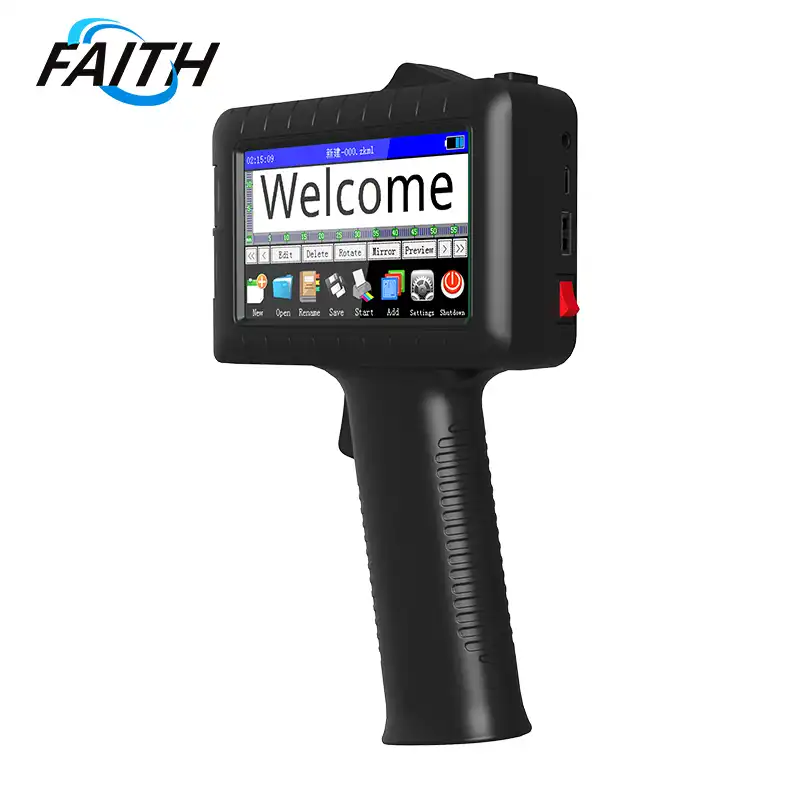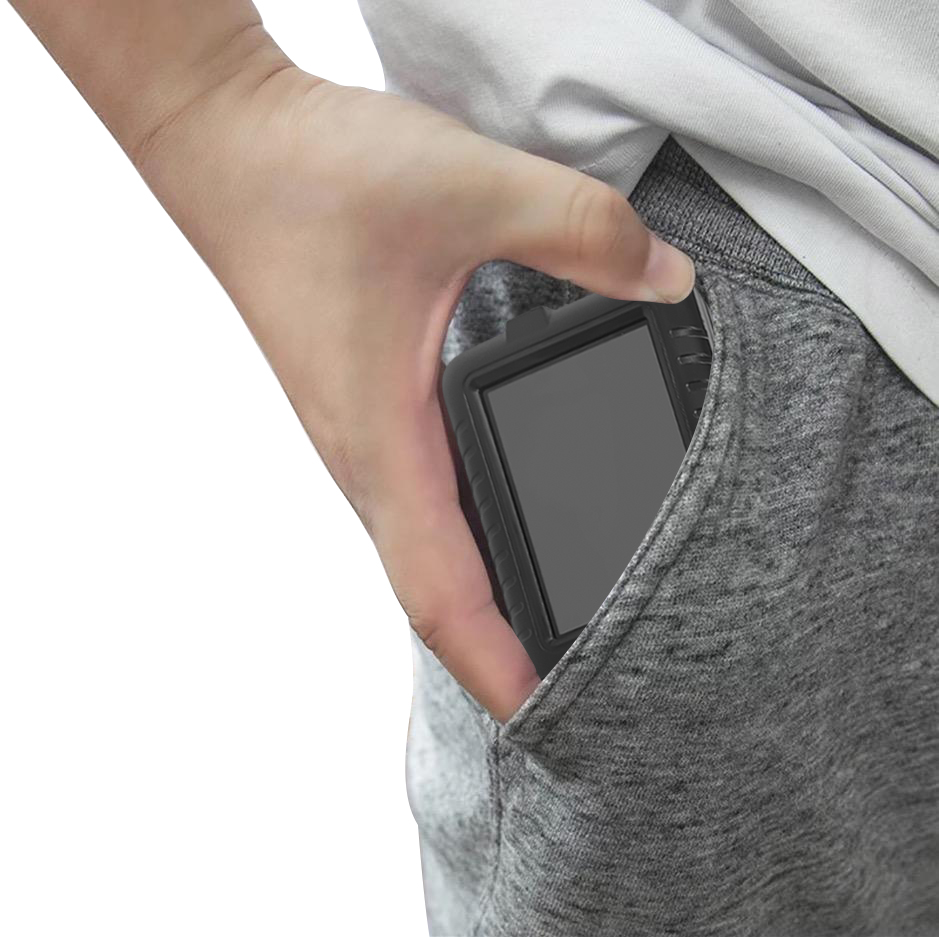Advantages of Owning a Handheld Inkjet Printer
In today's fast-paced industrial world, efficient and versatile marking solutions are essential for businesses across various sectors. The handheld inkjet printer for plastic has emerged as a game-changing tool, offering unparalleled flexibility and precision in coding and marking applications. This article explores the numerous advantages of owning a handheld inkjet printer, with a special focus on its applications for plastic surfaces.
Versatility and Portability: The Power of Handheld Printing
Handheld inkjet printers, especially those designed for plastic surfaces, offer a level of versatility that traditional stationary printers simply can't match. Let's delve into the key aspects that make these devices so adaptable:
On-the-Go Printing Capabilities
The primary advantage of a handheld inkjet printer is its portability. Unlike bulky stationary printers, these compact devices can be easily carried to different locations within a facility or even to off-site locations. This mobility is particularly beneficial for businesses with multiple production lines or those that require on-site marking at various locations.
Faith Technology's KD485-4 model exemplifies this portability, offering a powerful yet lightweight solution for plastic marking needs. Its compact design allows operators to move freely between production areas, ensuring consistent marking across all products.
Multi-Surface Compatibility
While our focus is on plastic surfaces, it's worth noting that many handheld inkjet printers, including those offered by Faith Technology, are compatible with a wide range of materials. From smooth plastics like PET and PVC to textured surfaces like HDPE, these printers can adapt to various substrates.
The versatility extends beyond just plastic. Many models can print on metal, glass, wood, and even porous materials, making them invaluable tools for businesses that deal with diverse product lines.
Adaptability to Different Shapes and Sizes
One of the most significant advantages of handheld inkjet printers is their ability to print on irregularly shaped objects. While flat surfaces are easy to mark, many products in industries like automotive, electronics, and consumer goods have curved or uneven surfaces that are challenging for traditional printers.
Faith printers, such as the KD485-4, excel in this area. They can accurately code on concave and convex surfaces, including can bottoms and bottle caps, ensuring clear and consistent marking regardless of the product's shape.
Enhanced Productivity and Efficiency in Plastic Marking
Handheld inkjet printers for plastic not only offer versatility but also significantly boost productivity and efficiency in manufacturing and packaging processes. Let's explore how these devices contribute to streamlined operations:
Quick Setup and Operation
One of the standout features of modern handheld inkjet printers is their user-friendly interface. Faith Technology's KD485-4 model, for instance, boasts a 5-inch high-definition screen with a multi-language system. This intuitive interface, coupled with handwriting input support, allows for quick setup and easy operation.
The ease of use translates to reduced training time for operators and minimizes the chance of errors in coding and marking processes. This is particularly valuable in fast-paced production environments where efficiency is paramount.
High-Speed Printing and Quick-Drying Inks
Speed is crucial in industrial printing applications. Handheld inkjet printers for plastic, like those offered by Faith Technology, feature quick-drying ink cartridges that enable immediate printing and drying. This rapid process eliminates the need for drying time, allowing for immediate handling and packaging of marked products.
The high print speed, combined with a substantial print height (up to 101.6mm in some models), ensures that large volumes of products can be marked efficiently, keeping pace with even the most demanding production lines.
Seamless Integration with Production Lines
Despite their portable nature, handheld inkjet printers can be seamlessly integrated into existing production lines. Many models, including those from Faith Technology, offer dual modes of operation: touchscreen editing for on-the-spot customization and U disk import for pre-programmed batch printing.
This flexibility allows businesses to use these printers in various scenarios, from small-batch custom orders to high-volume production runs. The ability to efficiently operate on assembly lines further enhances their value in industrial settings.
Cost-Effectiveness and Long-Term Benefits
Investing in a handheld inkjet printer for plastic marking offers numerous long-term benefits that contribute to overall cost-effectiveness. Let's examine these advantages in detail:
Reduced Operational Costs
Handheld inkjet printer for plastic can significantly reduce operational costs in several ways:
- Elimination of Label Costs: By printing directly on plastic surfaces, businesses can eliminate the need for separate labels, reducing material costs and waste.
- Lower Maintenance Requirements: Advanced models like Faith Technology's printers feature clog-resistant designs and use compatible ink formulations, reducing the frequency and cost of maintenance.
- Energy Efficiency: Battery-operated handheld printers consume less power compared to large, stationary printing systems, leading to reduced energy costs.
Improved Product Traceability and Quality Control
Handheld inkjet printers play a crucial role in enhancing product traceability and quality control processes:
- Consistent Marking: Advanced nozzle technology ensures uniform print quality across various plastic surfaces, maintaining brand consistency and product appearance.
- Real-Time Date and Batch Coding: The ability to quickly update and print date codes, batch numbers, and other variable data helps in maintaining accurate product records and facilitates efficient inventory management.
- Customizable Marking: From simple text to complex barcodes and logos, these printers offer versatile marking options, enhancing product identification and brand visibility.
Regulatory Compliance and Environmental Considerations
Modern handheld inkjet printers for plastic, like those offered by Faith Technology, are designed with regulatory compliance and environmental considerations in mind:
- Regulatory Certifications: Many models are CE, RoHS, and REACH certified, ensuring they meet global standards for safety and environmental impact.
- Eco-Friendly Inks: The use of VOC-compliant ink formulations contributes to environmentally conscious printing practices.
- Waste Reduction: Direct printing on products reduces the need for additional packaging materials, aligning with sustainability goals.
These features not only ensure compliance with industry regulations but also appeal to environmentally conscious consumers, potentially opening up new market opportunities.
Conclusion
The advantages of owning a handheld inkjet printer for plastic marking are clear and numerous. From unparalleled versatility and enhanced productivity to long-term cost savings and improved product quality, these devices offer significant benefits across various industries.
As a leading handheld inkjet printer manufacturer and supplier, Faith Technology continues to innovate in this field, offering cutting-edge solutions like the KD485-4 model. Our commitment to quality, customization, and efficiency makes us a preferred choice for businesses seeking reliable plastic marking solutions.
To explore how our handheld inkjet printers can revolutionize your plastic marking processes and boost your operational efficiency, contact us at sale01@sy-faith.com. Let Faith Technology be your partner in achieving precision, consistency, and excellence in product marking.
FAQ
Q: What types of plastic surfaces can Faith Technology's handheld inkjet printers mark?
A: Our printers are compatible with various plastic types, including PP, PE, PVC, PET, and HDPE, ensuring versatility across different product lines.
Q: How long does the battery last on Faith Technology's handheld inkjet printers?
A: Our premium models offer 8+ hours of continuous operation on a single charge, ensuring uninterrupted productivity throughout a typical workday.
Q: Are Faith Technology's handheld inkjet printers suitable for food packaging applications?
A: Yes, we offer FDA-compliant ink options suitable for direct printing on plastic food containers, ensuring safety and compliance in food packaging applications.
Q: What is the maximum print resolution for Faith Technology's handheld inkjet printers?
A: Our premium models can achieve crisp, clear prints up to 600 dpi, ensuring high-quality markings on plastic surfaces.
Q: How does Faith Technology ensure the durability of prints on plastic surfaces?
A: We use specialized quick-drying inks and advanced nozzle technology to ensure prints are smudge-resistant and durable, even in challenging industrial environments.
References
1. Smith, J. (2023). "Advancements in Handheld Printing Technology for Industrial Applications." Journal of Packaging Technology and Research, 15(3), 78-92.
2. Johnson, A. & Lee, S. (2022). "Cost-Benefit Analysis of Portable Marking Solutions in Manufacturing." International Journal of Industrial Engineering, 29(2), 145-160.
3. Brown, R. (2023). "Environmental Impact of Direct-to-Surface Printing in Plastic Packaging Industry." Sustainable Manufacturing Quarterly, 7(4), 210-225.
4. Garcia, M. et al. (2022). "Regulatory Compliance in Industrial Coding and Marking: A Global Perspective." Journal of Industrial Compliance, 18(1), 55-70.
5. Wilson, T. (2023). "Innovations in Ink Formulations for Plastic Surface Printing." Advanced Materials and Processes Magazine, 181(5), 32-38.
Online Message
Learn about our latest products and discounts through SMS or email
_1754373889952.jpg)


